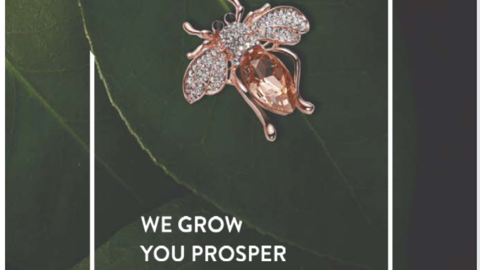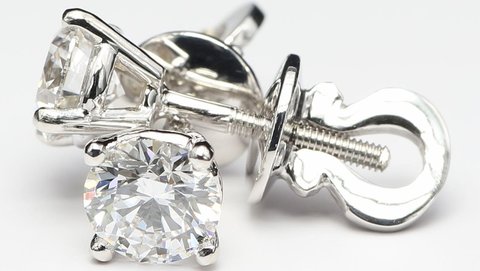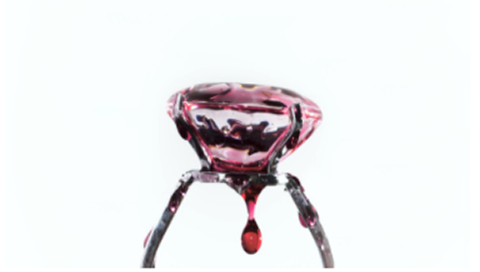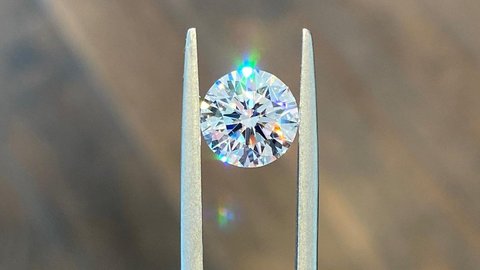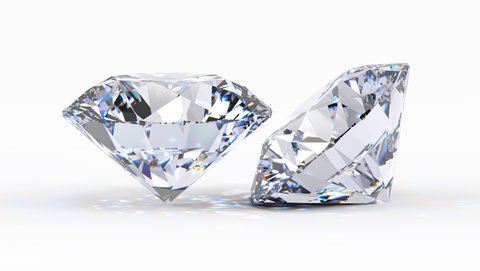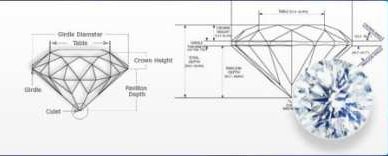Pear Cut Diamond Buying Guide

Shape
The pear shape is a unique hybrid of the oval and round cuts with an oval outline and one pointed end. It’s considered to be one of the most expensive diamond shapes, as it catches people’s attention with its elongated silhouette resembling a teardrop. Two primary characteristics considered upon choosing a pear shaped diamond are depth percentage and table size. They both are expressed as percentages in a grading report.
Depth percentage is the ratio in which physical depth of the diamond is divided by its width. The perfect depth percentage may be different for various cuts, but the ideal number for a pear is somewhere between 56 to 66%. This measurement is quite important for a pear diamond, as it shows how the light would be reflected back off the inside of the stone. Depth is also crucial for elongated shapes, such as pear, because of the 'bowtie' effect.
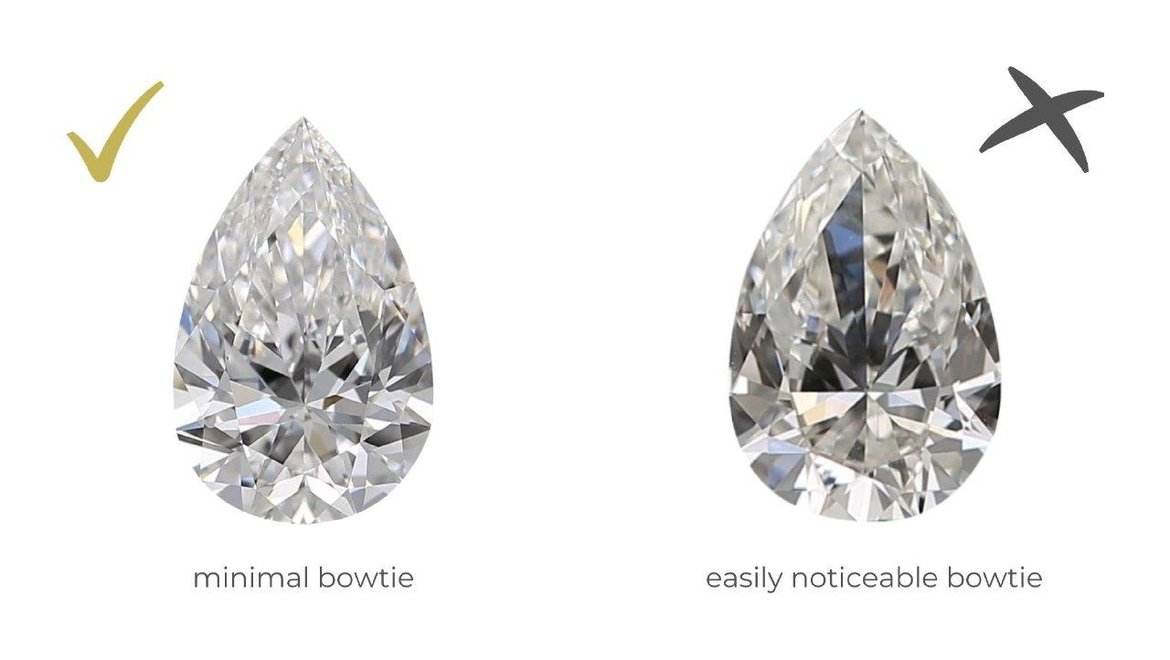
Cut
The bowtie effect is the gray or black pattern that runs across the width of the stone from the edges to the center of the table. The bigger the difference between length and width of the diamond, the darker the pattern gets. Bowtie is more visible in the deep diamonds.
Pear Cut Diamond Table
Table percentage is the width of the diamond's table divided by the width of the whole diamond. For pear shapes, the number in the range between 54% to 56% is considered excellent. Since proportions affect how much light is reflected and how much the stone sparkles, paying attention to these ratios is a given, especially for such a unique shape as a pear.
| Excellent | Very good | Good | Fair | Poor | |
| Table | 54% – 64% | 52% – 66% | 50% – 68% | 48%– 70% | <50 or >70 |
| Depth | 56% – 66% | 54% – 72% | 52% – 71% | 50%– 74% | <50 or >74 |
| L/W Ratio | 1.70-1.55 | 1.55-1.45 | 1.45-1.35 | 1.35-1.25 | >1.25 |
| Girdle | Very Thin to Slightly Thick | Very Thin to Slightly Thick | Very Thin to Thick | Very Thin to Very Thick | Extremely Thin to Extremely Thick |

A pear cut tends to have a larger surface area relative to the total weight of the diamond, so it usually looks larger than the round or square shapes with the same weight. The classic length to width ratio is 1.55. The best choice for someone looking for an elongated pear is 1.70. The diamonds with ratios below 1.55 or above 1.75 should not be considered, as the pear shape may look too wide or have curvy edges with no smooth transition to the tip of stone. The sharp point should also be protected with a good setting, as it is the part that is most likely to chip.

Clarity
One of the main advantages of the pear cut is that it is great at concealing inclusions, especially at the pointed edge where it’s almost impossible to see any imperfections. Choosing a gemstone with an SI clarity grade may be the best option to prevent paying extra and still get a gorgeous diamond. However, some inclusions under the table can be seen with a naked eye, even if it's a VS-graded diamond. This is why inspecting the stone itself is still a crucial part of the buying process.

Color
Pear shape exhibits even more color than a classic round brilliant, because the initial color concentrates on the pointed end of the stone. If the diamond has a high amount of yellow tints, they will be easily visible even with a naked eye. It’s better to choose the gemstone with G or higher color grade to be sure that the diamond will look white and clean.





